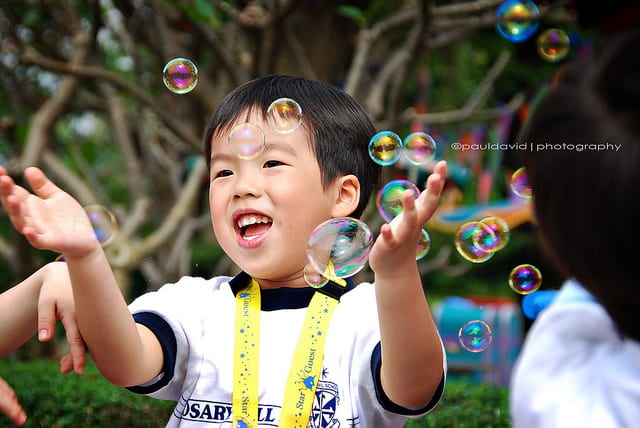Not a parent? Stop right there! You don’t need to move right along! Chances are you have kids in your life somewhere, and these are still great tips for you. As we mentioned earlier in the month, in addition to educating you on the philosophy regarding the dangers and habits of associating emotion with “stuff” this month, we’re also going to give you some tangible projects that you can do to help achieve the goals of this year’s featured New Year’s resolution of separating emotion and “stuff.” If you have kids, know kids, talk to parents or are thinking of having kids, this project is for you!
Step One: Make Sure You’re Already Clear on All Things Emotion and Stuff!
Obviously, we’re not big believers in the phrase “Those that can do and those that can’t teach.” But we are believers that the best teachers know their subject matter cold. Before you embark on teaching kids to separate emotion from stuff, make sure that you’ve made progress on understanding and doing the same yourself.
Step Two: Set Up the First Lesson
You are now going to step into the role of teacher! Don’t worry! We’ve already figured out the lesson plan for you. The lesson is ideal for children ages six to about ten. After that, you’ll have a harder time as (we all know) their minds are less moldable. That doesn’t mean that you can’t help them to learn Postconsumer lessons. In fact, we have an entire Postconsumer Parenting section. But in this case, we’ve developed a lesson experience for younger children. And the best news? Your kids won’t even realize that it’s a lesson until very near the end.
Essentially, the lesson set up is a scavenger hunt. You’ll want to allocate about an hour from start to finish. Sit your kids (or the kids you’re “borrowing”) down at the table and tell them that today we’re going to learn an activity about feelings. Now, send them into the house or apartment for five things they can carry.
- An item they love.
- An item they hate.
- An item that makes them happy.
- An item that makes them sad.
- Their favorite item in the house.
Step Three: Sort the Items
Kids are smart. Often smarter than adults are. And they haven’t had years of indoctrination about emotion and stuff yet. So it’s very likely that the mix of “stuff” that they bring back is a mix of “things” that validate an emotional connection and things that don’t. For example, if they brought a picture of a person that they love to represent love, that is obviously different than if they brought their favorite toy doll or car because they “love” it. Same with food. Take the time to separate things into piles of actual “stuff” and items that are about experiences (food is a great example). There are also going to be things that are a middle ground. A child may bring a basketball back and say that they brought it because they love playing basketball. That’s going to open a conversation for you about what they really love. So you may end up with three piles instead of two because, much like life, this exercise isn’t always black and white.
Step Four: Have the Conversation
We’re sure if you think back to when you were in school (we’re positive it was just a minute ago!) you’ll remember that the best classes were the ones that were conversations. That’s exactly what you’re going to do right here, and right now.
Begin by explaining the difference between actual “stuff” and stuff that was brought to you to represent an experience or even a person.
Then ask the kids if they believe that the actual “stuff” can love or hate them back.
Then explain to them that the most basic requirement for an emotion is that it happens from an activity or between people, even animals.
Then ask them if they really hate or love their items, or if they hate or love something that the items represent.
Then let the conversation unfold!
At the End, Though. You Have to Make Sure They Get the Point.
However, even though the start to the lesson is fun (a scavenger hunt) and the body of the lesson is unstructured (a conversation) you still need to clearly affirm the point at the end. Really explain to the kids that as they get older people and TV will try to convince them that they can have an emotion for “stuff.” But they need to be smarter than TV is and know that they can’t. It’s also important that at this point you make sure that they repeat back to you what they have learned to reinforce it.
The earlier that you teach them, the more likely you are to put them on a path to true satisfaction. This project can take less than half an hour but have an impact that lasts for potential lifetimes.
Have another idea for teaching kids that stuff doesn’t equal emotion? Tell us about it on the social media channels below.
Facebook | Twitter | Instagram | Tumblr | Pinterest | Google+ | Medium





